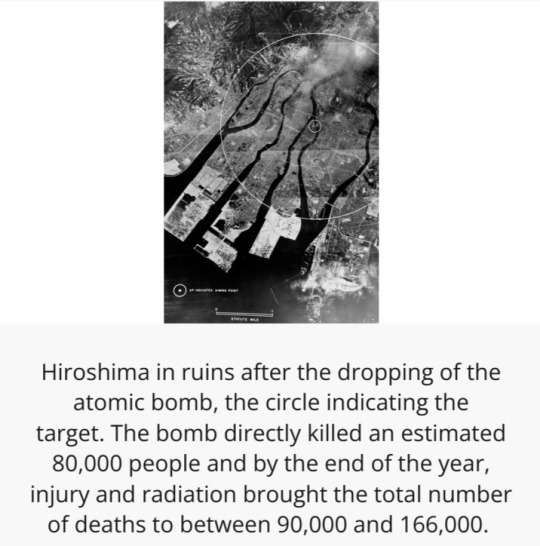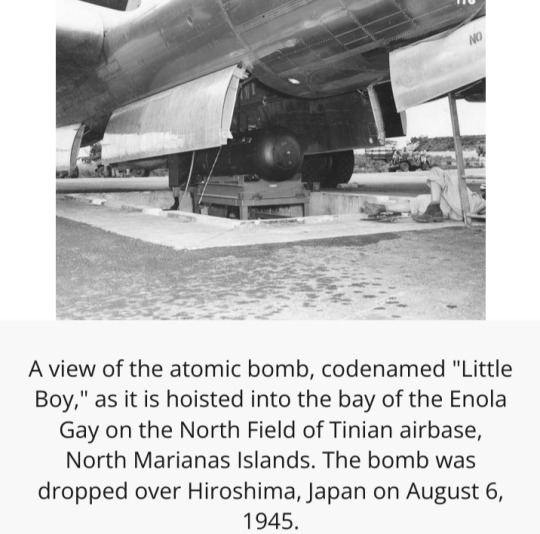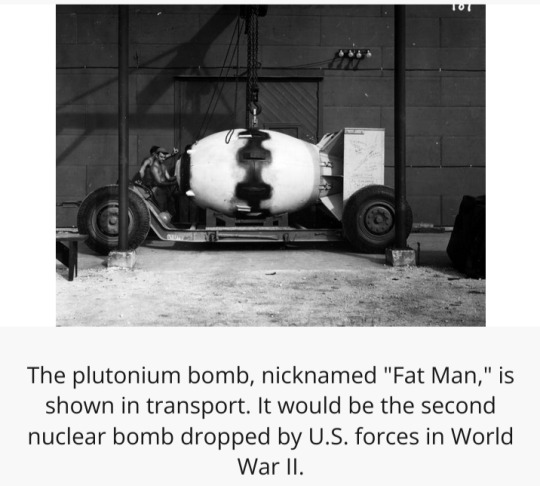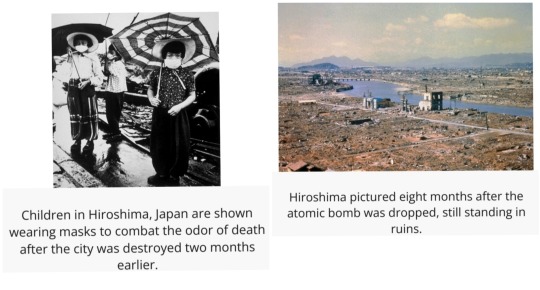#Potsdam Square
Explore tagged Tumblr posts
Video
Berlinale-Bär by Pascal Volk
#Alte Potsdamer Straße#Berlin#Berlin Mitte#Europe#Germany#Tha Playce#Tiergarten#Berlinale#Potsdamer Platz#Potsdam Square#People#Menschen#Leute#Street Photography#bear sculpture#Bärenskulptur#Wide Angle#Weitwinkel#gran angular#WA#WW#Invierno#Winter#Skulptur#sculpture#escultura#Canon EOS 5D Mark IV#5DMkIV#Canon EF 35mm f/1.4L II USM#35mm
2 notes
·
View notes
Text

Ernst Ludwig Kirchner, Potsdamer Platz (Potsdam Square), 1914
33 notes
·
View notes
Text

Servicemen in Times Square happily reading the extra editions announcing that Japan's Domei News Agency had reported that Japan was ready to accept unconditional surrender under the Potsdam conference terms if Emperor Hirohito could retain his prerogatives, August 10, 1945. The surrender didn't actually happen until a few days later.
Photo: Harry Harris for the AP
#vintage New York#1940s#Harry Harris#World War II#Japanese surrender#Aug. 10#10 Aug.#newspapers#newspaper extras#V-J Day#servicemen#1940s New York
38 notes
·
View notes
Text
In 1917, during WW1:
The most outstanding representative of this trend [true internationalists] in Germany is the Spartacus group or the Internationale group, to which Karl Liebknecht belongs. Karl Liebknecht is a most celebrated representative of this trend and of the new, and genuine, proletarian International.
Karl Liebknecht called upon the workers and soldiers of Germany to turn their guns against their own government. Karl Liebknecht did that openly from the rostrum of parliament (the Reichstag). He then went to a demonstration in Potsdamer Platz, one of the largest public squares in Berlin, with illegally printed leaflets proclaiming the slogan “Down with the Government!” He was arrested and sentenced to hard labour. He is now serving his term in a German convict prison, like hundreds, if not thousands, of other true German socialists who have been imprisoned for their anti-war activities.
The Tasks of the Proletariat in Our Revolution by Lenin
the enemy is at home, even when "your" country is at war with other capitalist powers. even when those powers invade "your" country or threaten to. you are a proletarian and your enemy is the bourgeoisie and its allies
#socialism#politics#socialist history#german history#the german revolution 1918-19#communism#marxism
4 notes
·
View notes
Text


On 6 August 1945, during World War II (1939-45), an American B-29 bomber dropped the world’s first deployed atomic bomb over the Japanese city of Hiroshima.
The explosion immediately killed an estimated 80,000 people; tens of thousands more would later die of radiation exposure.
Three days later, a second B-29 dropped another A-bomb on Nagasaki, killing an estimated 40,000 people.
Japan’s Emperor Hirohito announced his country’s unconditional surrender in World War II in a radio address on August 15, citing the devastating power of “a new and most cruel bomb.”
The Manhattan Project
Even before the outbreak of war in 1939, a group of American scientists — many of them refugees from fascist regimes in Europe — became concerned with nuclear weapons research being conducted in Nazi Germany.
In 1940, the U.S. government began funding its own atomic weapons development program, which came under the joint responsibility of the Office of Scientific Research and Development and the War Department after the U.S. entry into World War II.
The U.S. Army Corps of Engineers was tasked with spearheading the construction of the vast facilities necessary for the top-secret program, codenamed “The Manhattan Project” (for the engineering corps’ Manhattan district).

Over the next several years, the program’s scientists worked on producing the key materials for nuclear fission — uranium-235 and plutonium (Pu-239).
They sent them to Los Alamos, New Mexico, where a team led by J. Robert Oppenheimer worked to turn these materials into a workable atomic bomb.
Early on the morning of 16 July 1945, the Manhattan Project held its first successful test of an atomic device — a plutonium bomb — at the Trinity test site at Alamogordo, New Mexico.
No Surrender for the Japanese
By the time of the Trinity test, the Allied powers had already defeated Germany in Europe.
Japan, however, vowed to fight to the bitter end in the Pacific, despite clear indications (as early as 1944) that they had little chance of winning.
In fact, between mid-April 1945 (when President Harry Truman took office) and mid-July, Japanese forces inflicted Allied casualties totaling nearly half those suffered in three full years of war in the Pacific, proving that Japan had become even more deadly when faced with defeat.
In late July, Japan’s militarist government rejected the Allied demand for surrender put forth in the Potsdam Declaration, which threatened the Japanese with “prompt and utter destruction” if they refused.

General Douglas MacArthur and other top military commanders favored continuing the conventional bombing of Japan already in effect and following up with a massive invasion, codenamed “Operation Downfall.”
They advised Truman that such an invasion would result in U.S. casualties of up to 1 million.
In order to avoid such a high casualty rate, Truman decided – over the moral reservations of Secretary of War Henry Stimson, General Dwight Eisenhower and a number of the Manhattan Project scientists – to use the atomic bomb in the hopes of bringing the war to a quick end.
Proponents of the A-bomb — such as James Byrnes, Truman’s secretary of state — believed that its devastating power would not only end the war but also put the U.S. in a dominant position to determine the course of the postwar world.
'Little Boy' and 'Fat Man' Are Dropped

Hiroshima, a manufacturing center of some 350,000 people located about 500 miles from Tokyo, was selected as the first target.
After arriving at the U.S. base on the Pacific island of Tinian, the more than 9,000-pound uranium-235 bomb was loaded aboard a modified B-29 bomber christened Enola Gay (after the mother of its pilot, Colonel Paul Tibbets).
The plane dropped the bomb — known as “Little Boy” — by parachute at 8:15 in the morning.
It exploded 2,000 feet above Hiroshima in a blast equal to 12-15,000 tons of TNT, destroying five square miles of the city.
Hiroshima’s devastation failed to elicit immediate Japanese surrender, however, and on August 9, Major Charles Sweeney flew another B-29 bomber, Bockscar, from Tinian.
Thick clouds over the primary target, the city of Kokura, drove Sweeney to a secondary target, Nagasaki, where the plutonium bomb “Fat Man” was dropped at 11:02 that morning.

More powerful than the one used at Hiroshima, the bomb weighed nearly 10,000 pounds and was built to produce a 22-kiloton blast.
The topography of Nagasaki, which was nestled in narrow valleys between mountains, reduced the bomb’s effect, limiting the destruction to 2.6 square miles.
Aftermath of the Bombing

At noon on 15 August 1945 (Japanese time), Emperor Hirohito announced his country’s surrender in a radio broadcast.
The news spread quickly.
“Victory in Japan” or “V-J Day” celebrations broke out across the United States and other Allied nations.
The formal surrender agreement was signed on September 2, aboard the U.S. battleship Missouri, anchored in Tokyo Bay.
Because of the extent of the devastation and chaos — including the fact that much of the two cities' infrastructure was wiped out — exact death tolls from the bombing of Hiroshima and Nagasaki remain unknown.
However, it's estimated roughly 70,000 to 135,000 people died in Hiroshima and 60,000 to 80,000 people died in Nagasaki, both from acute exposure to the blasts and from long-term side effects of radiation.



#Bombing of Hiroshima and Nagasaki (1945)#6 August 1945#atomic bomb#Hiroshima#Nagasaki#B-29 bomber#A-bomb#U.S. Army Corps of Engineers#The Manhattan Project#nuclear weapons research#Office of Scientific Research and Development#War Department#World War II#WWII#uranium-235#plutonium (Pu-239)#nuclear fission#plutonium bomb#J. Robert Oppenheimer#Oppenheimer#Trinity test#Potsdam Declaration#General Douglas MacArthur#Operation Downfall#Henry Stimson#General Dwight Eisenhower#Enola Gay#Colonel Paul Tibbets#Bockscar#V-J Day
37 notes
·
View notes
Photo






A few more cherry blossom pics.
These shoot took place at the TV Asahi Kirschblütenallee in Teltow, Brandenburg at the border to Berlin.
Among the Japanese population, the end of the German division was received with great interest. The TV station TV Asahi therefore called on its viewers to participate in a fundraising campaign. The goal was to raise money for the planting of Japanese flowering cherries. These trees are intended to bring "peace and tranquility to people's hearts." The donation fund collected more than 140 million yen (the equivalent of about one million euros), which was used to finance the trees.
The trees were planted in Berlin and Brandenburg at places that played a special role during the division of Germany. For example, the first trees were planted at the Glienicke Bridge between Berlin and Potsdam. The last trees were handed over to the public on November 9, 2010, in the presence of the Governing Mayor of Berlin, Klaus Wowereit, at the Square of November 9, 1989, at the former Bornholmer Strasse border crossing.
The Sakura campaign planted 10,000 Japanese cherries in Berlin and Brandenburg between 1990 and 2010.
13 notes
·
View notes
Text









Today mom took the day off (it was Sunday) and we went back to Potsdam. Mom wanted to see the historic part of the city. That meant we got to ride in the car again. I think my seat back home may actually be bigger, but I can see mom easier in this car.
Our first stop was The Old Market Square, where we saw St Nicolas’ church. It was built in the 1830s but the dome was added in the 1840s. it does not look quite so much as a cube anymore. Another building in the square is the Old City Hall which among other things, was used as a jail for over 100 years. We also walked thru the City Palace and looked at the Gate of Fortune which is now part of the city Palace.
After that we walked to the St Peter and Paul which was built into the 1860s even though it was designed in the byzantine & Romanesque style.
Next we went to the Dutch quarter for lunch. The buildings were built in the mid 1700s to house artisans brought to the city as it was expanding. On our way to the Brandenburg gate we passed a pump that was like the ones we see on the streets of berlin – so mom had to take another picture – she is always taking pictures of pumps.
Our last stop was the Protestant church of peace. It was designed to look like an Italian medieval monastery. The tower was under renovation, so the pictures were not as impressive as mom had hoped they would be.
Our plan was to head to a park on an island in the river on our way back to the car. But I was so tired, we had to stop for a break on the way back. It must have been a long break, because we ended up going straight to the car and headed home. When we got home, I went straight to bed, I even skipped dinner – I am still sleeping, so I must have been really really tired.
3 notes
·
View notes
Text

🥔🌍 The "Potsdam Gravity Potato" shows the differences in gravity on Earth's surface. It has a potato-like shape due to variations in Earth's mass distribution, causing local gravitational anomalies that appear as an irregular shape when mapped.
The Indian Ocean has the world's largest gravity 'black hole,' which is the most recessed part of the potato (marked with blue). This spot is called the Indian Ocean Geoid Low (IOGL), and it is the largest gravity anomaly on our planet, covering an area of about 3 million square kilometers, almost the size of India itself. Due to the low gravity there, the sea level over the IOGL is up to 106 m (348 ft) lower than the global average. That means if you were to sail across the anomaly, you would be closer to Earth's center than anywhere else on the ocean.
0 notes
Text


The most energetic cosmic-ray electrons and positrons ever observed
The Universe teems with extreme environments, ranging from the very coldest temperatures to the highest energy sources possible. As a consequence, extreme objects such as supernova remnants, pulsars and active galactic nuclei are capable of emitting charged particles and gamma rays with incredibly high energies, so high that they exceed the energy produced by the nuclear fusion in stars by several orders of magnitude.
The gamma rays detected on Earth tell us a great deal about these sources, since they travel through space undisturbed. However, in the case of charged particles, also known as cosmic rays, things are more complicated because they are constantly buffeted by the magnetic fields present everywhere in the Universe, and impact the Earth isotropically, in other words from all directions. What's more, these charged particles lose some of their energy along the way, when they interact with light and magnetic fields. These energy losses are especially significant for the most energetic electrons and positrons, known as cosmic-ray electrons (CRe), whose energy exceeds one teraelectronvolt (TeV) (i.e. 1000 billion times greater than that of visible light)1. It is therefore impossible to determine the point of origin of such charged particles in space, although their detection on Earth is a clear indicator that there are powerful cosmic-ray particle accelerators in its vicinity.
However, detecting electrons and positrons with energies of several teraelectronvolts is particularly challenging. Space-based instruments, with detection areas of around one square metre, are unable to capture sufficient numbers of such particles, which become increasingly rare the higher their energy. Ground-based instruments on the other hand, which indirectly detect the arrival of cosmic rays via the showers of particles they produce in the Earth's atmosphere, are faced with the challenge of differentiating the showers triggered by cosmic-ray electrons (or positrons) from the much more frequent showers produced by the impact of the heavier cosmic-ray protons and nuclei. The H.E.S.S. Observatory2 located in Namibia uses five large telescopes to capture and record the faint Cherenkov radiation produced by the heavily charged particles and photons that enter the Earth's atmosphere, producing a shower of particles in their wake. Although the Observatory’s main purpose is to detect and select gamma rays in order to investigate their sources, the data can also be used to search for cosmic-ray electrons.
In the most extensive analysis ever carried out, H.E.S.S. collaboration scientists have now obtained new information about the origin of these particles. The astrophysicists did this by combing through the huge data set collected over the course of a decade by the four 12-metre telescopes, applying new, more powerful selection algorithms capable of extracting the CRe from the background noise with unprecedented efficiency. This resulted in an unrivalled set of statistical data for the analysis of cosmic-ray electrons. More specifically, the H.E.S.S. researchers were able to obtain for the first time data about CRe in the highest energy ranges, all the way up to 40 TeV. This enabled them to identify a surprisingly sharp break in the energy distribution of the cosmic-ray electrons.
“This is an important result, as we can conclude that the measured CRe most likely originate from very few sources in the vicinity of our own solar system, up to a maximum of a few 1000 light years away, a very small distance compared to the size of our Galaxy”, explains Kathrin Egberts, from the University of Potsdam, one of the corresponding authors of the study.
“We were able to put severe constrains on the origin of these cosmic electrons with our detailed analysis for the first time”, adds Prof. Hofmann from the Max-Planck-Institut für Kernphysik, co-author of the study. “The very low fluxes at larger TeV limit the possibilities of space-based missions to compete with this measurement. Thereby, our measurement does not only provide data in a crucial and previously unexplored energy range, impacting our understanding of the local neighbourhood, but it is also likely to remain a benchmark for the coming years”, Mathieu de Naurois, CNRS Researcher from the Laboratoire Leprince-Ringuet, adds.
Footnotes :
1 TeV = 1012 electronvolts.
High-energy gamma rays can be observed from the ground only because of a very specific phenomenon. When a gamma ray enters the atmosphere it collides with its atoms and molecules, producing new particles that sweep towards the ground rather like an avalanche. The particles emit flashes lasting mere billionths of a second (Cherenkov radiation), which can be observed using large, specially equipped ground-based telescopes.The H.E.S.S. Observatory, located in the Khomas Highlands of Namibia at an altitude of 1835 m, officially began operation in 2002. It comprises an array of five telescopes. Four telescopes with mirrors 12 m in diameter are located at the corners of a square, with another 28 m telescope at the centre. This makes it possible to detect cosmic gamma rays ranging from a few tens of gigaelectronvolts (GeV, 109 electronvolts) to a few tens of teraelectronvolts (TeV, 1012 electronvolts). By comparison, photons of visible light have an energy of two to three electronvolts. H.E.S.S. is currently the only instrument observing the southern sky in high-energy gamma-ray light. It is also the largest and most sensitive telescope system of its kind.
TOP IMAGE: Visualisation of the H.E.S.S. telescope array capturing the showers of particles produced by high-energy cosmic electrons and positrons, as well as gamma rays. Credit © MPIK/H.E.S.S. Collaboration
LOWER IMAGE: Artist's impression of a pulsar with its powerful magnetic field rotating around it. The clouds of charged particles moving along the field lines emit gamma rays that are focused by the magnetic fields, rather like the beams of light from a lighthouse. In these magnetic fields, pairs of positrons and electrons are created and accelerated, making pulsars potential sources of high-energy cosmic electrons and positrons. Credit ©NASA/Goddard Space Flight Center Conceptual Image Lab
0 notes
Video
almost winter @ Potsdam Square, Berlin by Marco Murata Via Flickr:
#FE 24-50mm F2.8 G#Germany#TWOP#Sony ILCE-7RM4A#SEL-2450G#City#season#People#street photography#Sony#flickr
0 notes
Text
Cement and Sugar: Architecton & Architecture at the Berlin International Film Festival

At a lively press conference in Berlin on the morning of Monday, February 19, 2024, the makers of the documentary film Architecton faced questions from international media. Architecton is in competition for this year's Golden Bear award for best film.
Image: The Berlin International Film Festival's red carpet, at the Berlinale Palast, on February 17, 2024. Photograph by me. License: Attribution-NonCommercial-ShareAlike 2.0 Generic (CC BY-NC-SA 2.0 DEED)
Architecton Itself
Viktor Kossakovsky's film explores the international popularity, but also the pitfalls, of concrete and its component cement as building materials.
These pitfalls were vividly evident when earthquakes struck Turkey and Syria one year ago, reducing buildings to rubble.
In contrast, according to publicity materials, the film takes the viewer to ancient sites like Baalbek that used techniques, for example of stonework, that are irreproducible in modern architecture.
These ancient buildings have lasted millennia, their craftsmanship sublime.

Image: Libanon, Baalbek: Tempel; Detailansicht Kapitell. Photographed by Annemarie Schwarzenbach (1908-1942) in the 1930s. Source: Wikimedia Commons.
What did ancient architects and construction workers know that we don't?
*
Evgueni Galperine composed the music for the film. The Leipzig & Berlin-based producer of documentary films Heino Deckert is the producer. Italian architect and designer Michele de Lucci is the main protagonist. All three were available for questions in the Berlinale Palast.
It is not only Deckert who has ties to Germany. Michele de Lucci may be well known for co-designing the Tolomeo lamp in the late 1980s for the Italian firm Artemide. But he has also done projects in Germany, like his interior designs for the Deutsche Bahn in the late 1990s.
In the end, Kossakovsky held forth the most in the group. Wearing a discreetly sized Berlinale pin, in the colours of Ukraine's flag, on a grey suit, he took the moderator's hints to keep his answers short smilingly.
He talked enthusiastically about living in Berlin a few years ago.
The Grounds of the Former Tempelhof Airport
Kossakovsky praised Berlin's former airfield Tempelhofer Feld as a refuge during his stay, which coincided with Covid lockdowns.
"It was amazing to see that in the middle of Europe, in the middle of Berlin, there is empty space. And knowing the history of this place, Berliners stood up and said: No, don't put any buildings, don't put any skyscrapers, don't put any shopping malls, don't put any fitness centres. Keep it alive. [...] It's a unique place — unique for everyone"
Pressure to build more housing is intense in Berlin's overheated real estate market. The city government is making motions to reopen the question of building apartment buildings on parts of the field.
"I know that behind every politician there are developers, construction people, and they probably will convince us. But please stay strong."
-Viktor Kossakovsky, Berlin film festival press conference on February 19, 2024
Potsdamer Platz
He also criticized the architecture at Potsdamer Platz.
Residential buildings from the pre-war years in Berlin generally reach 7 levels including the ground floor at most. The Brandenburg Gate and the buildings surrounding it are even lower.
So Potsdamer Platz's skyscrapers, built in feverish haste after Germany was reunified in 1989, are described by some Berliners as a misguided attempt to inject slivers of New York City into the landscape.
Kossakovsky described the square as empty "three hundred days a year" — except during the Berlinale in February and the Christmas market in November to December.

Image: Potsdamer Platz, looking down the building valley of Alte Potsdamer Straße, on October 22, 2023. Photograph by the author. All rights reserved.
Concrete as the Modern Go-To
Next, Kossakovsky addressed the Holocaust Memorial in the city centre of Berlin. Stelae (blocks) built of concrete on an undulating ground, construction was finished in 2004. Not yet 20 years later, a large part of it is now crumbling, surrounded by metal security fencing that is an eyesore.
To the film director, in antithesis to the expected role of a memorial to last a long time, the Holocaust memorial exemplifies the short lifespan of modern concrete.
The ancient Romans made concrete in durable materials and techniques that were finally understood in 2017 and 2023 respectively. But the current lifespan of concrete is more like 80 years, he argues.
Fact Check? A construction draughtsman whom this author asked for comment took a different perspective. 40 years may be the standard estimate of durability for concrete (and incidentally also brick) buildings in German planning. But buildings will not inevitably crumble at that point. The draughtsman made the analogy that these estimates are like setting a best-before date for salt. If salt is adulterated with other substances that spoil quickly, a best-before date will make sense. But it's not fair to assume that salt will be adulterated. If modern concrete is properly poured and maintained, it could last for a thousand years.
At the same time, Viktor Kossakovsky sees Berlin's architectural landscape as a paradigm for the future of architecture around the world.
Berlin's hastily built residential buildings of the 1950s and 60s, which he characterized as sometimes "ugly," nevertheless reflected a serious purpose: the urgent need to shelter the city's population after the last weeks of World War II left the landscape shattered.
As real estate development is not keeping pace with the projected growth of the world's population, it is likely that around the world we will see much more ad hoc planning. A mixture of "beautiful" and "ugly" areas, like the mixture in Berlin, will become common.
'Harm Architecture'
But, looking beyond Berlin entirely to the world at large, not all shoddy constructions are the result of desperation.
In the last question of the press conference, a reporter asked why the documentary film had failed to name classism and colonialism as the root causes of architecture that harms or even kills residents.
Kossakovsky insisted that the root cause of 'harm architecture' is broader: the human urge to kill. Cannibalism may have finally disappeared this century, a step forward for humanity: but the slaughter of animals, fish, and fellow humans persists.
Message of the Film
The film director may have spoken dismissively of cement and concrete as the foundation of an "insane pandemic of boring architecture."
But the problems go beyond aesthetics and even longevity or quality. The environmental footprint of these building materials is colossal.
Jonathan Watts wrote for the Guardian five years ago that "All the plastic produced over the past 60 years amounts to 8bn tonnes. The cement industry pumps out more than that every two years."
He added, "Concrete is a thirsty behemoth, sucking up almost a 10th of the world’s industrial water use."
Each year, more than 4 billion tonnes of cement are produced, accounting for around 8 per cent of global CO2 emissions.
-Johanna Lehne and Felix Preston in the Executive Summary, "Making Concrete Change: Innovation in Low-carbon Cement and Concrete." Chatham House, 2018. Link (pdf)
Concrete cannot be the answer, as a building material, to housing the world's population of billions.
To end with the words of Viktor Kassakovsky:
"We have to face reality: sugar, cement — they are two drugs of our century."
===
Three Berlinale screenings of Architecton have sold out, but as of midnight on February 20, tickets were still available for 9:15 a.m. on February 21. The film is 98 minutes long.
The first 7 ratings are in on IMDb, for a score of 7.0.
Press conference in full: Berlinale Live 2024: Press Conference "Architecton"
Due diligence/disclaimer: I have not watched the film itself before writing this post.
The post has been amended on March 11, 2024, to reflect that the fencing around Berlin's Holocaust memorial is not a construction fence.
1 note
·
View note
Video
The Playce - EG by Pascal Volk
#Europe#Germany#Berlin#Berlin Mitte#Tiergarten#Potsdamer Platz#Potsdam Square#Plaza de Potsdam#The Playce#Potsdamer Platz Arkaden#Shopping mall#Einkaufszentrum#Shopping Center#Centro comercial#Interior#indoor#Innenraum#People#Menschen#Leute#Wide Angle#Weitwinkel#gran angular#super wide angle#Superweitwinkel#ultra wide angle#Ultraweitwinkel#ww#wa#sww
2 notes
·
View notes
Text
youtube
Young Nazis - Fight In Street (1938)
Unused / unissued material - no paperwork - dates unclear or unknown
Germany.
Young nazi boys - Hitler Youth - march along a road singing a song and carrying packs.
CU road sign "Strausberg - Kreis Oberbarnim . Reg-Bez. Potsdam."
The marching boys break into double time and jog along the road.
The boys run across a town square.
Two groups of boys - all in uniform - play a game which involves pushing their way through the ranks of their opposing team. Its obviously meant to build up aggression.
Dupe Neg in UN 56 S FILM ID:564.1
0 notes
Link
0 notes
Text
TOP 5 Places to Stay in Berlin
Berlin, the capital of Germany, is known for its rich history, contemporary art and picturesque parks. This city offers many unique places for recreation and entertainment. Let's dive into the world of the best places to stay in this unique city. Check out our guides at the https://guides2travel.com/ for more info.
Brandenburg Gate
The Brandenburg Gate is not just an architectural marvel, but also a symbol of unity and peace. Built in the 18th century, they have survived many historical events, witnessing both tragic and joyful moments in German history. This place is ideal for history and architecture lovers.
Around the gate there are many cafes and restaurants where you can enjoy traditional German cuisine or just drink a cup of coffee while admiring the historical monument. In the evening, the gates are illuminated, creating an incredibly beautiful and romantic atmosphere.
Museum Island
Museum Island is a unique collection of world museums located in the heart of Berlin. There's something for everyone here, from Ancient Egypt in the New Museum to European painting in the Old National Gallery. Museum Island is part of a UNESCO World Heritage Site, indicating its unique cultural value.
As you walk around the island, you can also enjoy views of the Spree River and the architecture of the surrounding buildings. This destination is ideal for art and history lovers, as well as those seeking tranquility and inspiration among cultural treasures.

Tiergarten Park
Tiergarten Park is the green heart of Berlin and an ideal place for relaxation and nature walks. Here you can have a picnic, ride a bike or just stroll along the picturesque alleys. The park is known for its ancient trees, ponds and green lawns, creating a sense of privacy among the bustle of the city.
Tiergarten is also home to the Berlin Zoological Garden, one of the oldest and most diverse zoos in the world. A visit to the zoo is a great idea for a family vacation or just for those who love animals.
Potsdamer Platz
Potsdamer Platz is a modern and dynamic place, famous for its high-rise buildings, cinemas and shopping centers. This square is a symbol of the rebirth of Berlin after the fall of the Berlin Wall. It is home to many cultural institutions, offices and entertainment venues, making it an important destination for business and leisure.
Potsdamer Platz is constantly hosting various events and festivals, making it an ideal destination for those who want to experience the pulsating rhythm of modern city life. The restaurants and cafes here cater to all tastes, offering both local and international cuisine.
Eastern Gallery
The Eastern Gallery is one of the most famous and significant street art sites in the world. Situated on a remaining section of the Berlin Wall, this gallery is a true open-air museum. It features works by artists from around the world, each of which tells its own story and reflects the historical significance of the wall.
A visit to the Oriental Gallery is not only an opportunity to see outstanding works of street art, but also to immerse yourself in Germany's recent history. This place is especially popular among young people and art lovers, and is one of the most photographed attractions in Berlin.
Each of these places offers a unique experience and allows you to see Berlin from different perspectives. From historical monuments to modern entertainment venues, Berlin is sure to offer something interesting for every visitor.
0 notes
Text
Enjoy your 3-hour bike tour in Berlin, taking in this remarkable city's rich history, fascinating landmarks, and vibrant atmosphere!
Description of a 3-hour Explore of Berlin's Historical Highlights, iconic landmarks, and points of interest as you pedal or ride in the Rickshaw.
We provide comfortable rickshaws with skilled and safe drivers for participants who prefer to avoid biking.
Berlin By bike tour and Rickshaw program.
Duration: 3 hours
Through the Tiergarten Park, we, in the direction of Victory Column, Bellevue, and Haus der Kultureren der Werlt, appreciate the surroundings and prepare for the adventure's next leg, Among River Spree.
Chancellery Berlin and Reichstag and Government Area: Continue the tour by picturing Chancellery Berlin, the official residence of the German Chancellor, and the Reichstag and Government Area. Your guide will share fascinating insights into the history and significance of these sites.
Brandenburger Tor and Unter den Linden: Pedal your bike or enjoy a rickshaw ride to the famous Brandenburger Tor, a symbol of Berlin and a significant historical monument. From there, explore the grand boulevard of Unter den Linden, lined with notable buildings and landmarks.
Bebelplatz (Square of Book Burning): Stop at Bebelplatz, known as the Square of Book Burning, where the Nazi regime burned books by Jewish and non-Aryan authors in 1933. Learn about the historical significance of this site and its impact on intellectual freedom.
Museum Island: Visit Museum Island, a UNESCO World Heritage Site, known for its exceptional ensemble of museums, including the Pergamon Museum, Bode Museum, and Neues Museum. Picture and inform you of this island's architectural beauty and cultural treasures.
Alexanderplatz and Gendarmenmarkt Berlin: Continue your bike tour or rickshaw ride to Alexanderplatz, a bustling square and transportation hub. Then, head to Gendarmenmarkt Berlin, one of the most beautiful squares in the city, flanked by impressive architectural landmarks.
Checkpoint Charlie and Holocaust Memorial: Explore Checkpoint Charlie, a former border crossing between East and West Berlin during the Cold War. Learn about its historical significance and the divided city.
Ministerium Airforce Hitler and the Topography of Terror provide insights into the crimes committed during the Nazi regime and the Berlin Wall.
Next, visit the poignant Holocaust Memorial, dedicated to the six million Jewish victims of the Holocaust.
Pass by historically significant locations such as the Führerbunker (parking place),
Potsdamer Platz and Tiergarten Berlin: Pedal or enjoy a rickshaw ride to Potsdamer Platz, a vibrant square with significant urban development. From there, venture into the expansive Tiergarten, Berlin's central park, known for its tranquil paths and beautiful landscapes.
Tiergarten Berlin: Immerse yourself in the beauty of Tiergarten, a vast urban park filled with lush greenery, serene lakes, and picturesque pathways. Enjoy a leisurely ride or a relaxing rickshaw journey through this tranquil oasis.
Remember, this is a tour in small groups, private Tours designed to your wishes and interests are on Request possible.
0 notes
